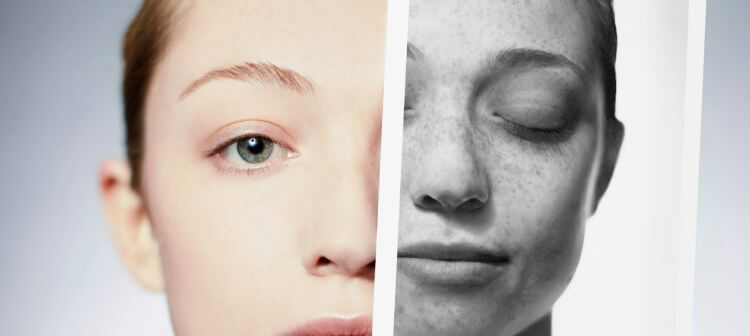It is Sun Awareness Week here in the UK, as the British Association of Dermatologists launch their annual, summer-long campaign to raise awareness about the importance of sun protection. This year, the focus is on tackling the misconception that we don’t need to use sun protection here in the UK.
As well as protecting ourselves from the very serious risk of harmful skin cancers, years of accumulative sun exposure is also responsible for 90% of skin ageing. Known as photoageing and distinct from chronological ageing, it is the result of ultraviolet rays damaging the skin’s structure. DNA changes occur at a cellular level, deep in the dermis, and it can take years before this damage surfaces and becomes visible as fine lines, skin laxity, uneven skin tone, broken capillaries, and pigment changes.
Reverse sun damage with 3 essential steps
Here’s the Karidis Clinic guide to preventing and treating UV damage:
1. Prevention is better than cure
Preventing photoageing is easier than trying to reverse the damage. Even if you’ve regularly overly-exposed your skin during your younger years, it’s never too late to start using a high factor sun protection product. Obagi’s SPF products are the first-line defence, protecting against both UVA and UVB rays.
Combining both physical and chemical ingredients and offering SPF50 protection, these broad-spectrum products defend you against harmful UVA, UVB and infrared (IR) rays.
2. Brighten up
Changes to skin colour is one of the most obvious signs of sun damage. The golden tan that we used to think was a sign of health and vitality is now a signal that the melanin production has exploded to safely absorb ultraviolet rays.
Even though our tans might fade at the end of the summer, the accumulative result of years of sun damage is permanent abnormal melanin production, known as brown spots or sun spots.
Medical-grade skincare can visibly lighten pigmentation, giving you a naturally glowing skin tone. Obagi Blend FX contains arbutin that inhibits tyrosinase, which is responsible for melanin production. Its formulation also works as an exfoliating agent to promote healthy cell turnover.
Another popular pigment treatment is VBeam. A pulse dye laser, its wavelength penetrates just below the skin’s surface, and it is very effective for treating superficial pigmentation problems such as freckles, solar lentigos and sun spots.
3. Tone and tighten
Fine lines, sagging and crepey skin are also the result of sun damage. Collagen, elastin, and hyaluronic acid are the components in the skin that give it strength, elasticity, and plumpness, and as we get older our natural levels begin to deplete. However, sun damage quickly speeds up this deterioration.
Our medical director Mr Alex Karidis is passionate about sun protection. “I can always tell when prospective facelift patients have been sun worshippers in the past. You can immediately detect the difference in skin quality.”
Often facial rejuvenation surgery is the only solution to lift sagging skin, but one non-surgical option are injectable moisturisers such as Profhilo or Teosyal’s Redensity. Composed of the highest concentrations of hyaluronic acid, they deeply hydrate and remodel the skin to tighten and plump up the appearance of crepey skin.
For more advice on reversing sun damage, call 0207 432 8727 to arrange an appointment at Karidis Clinic.
















